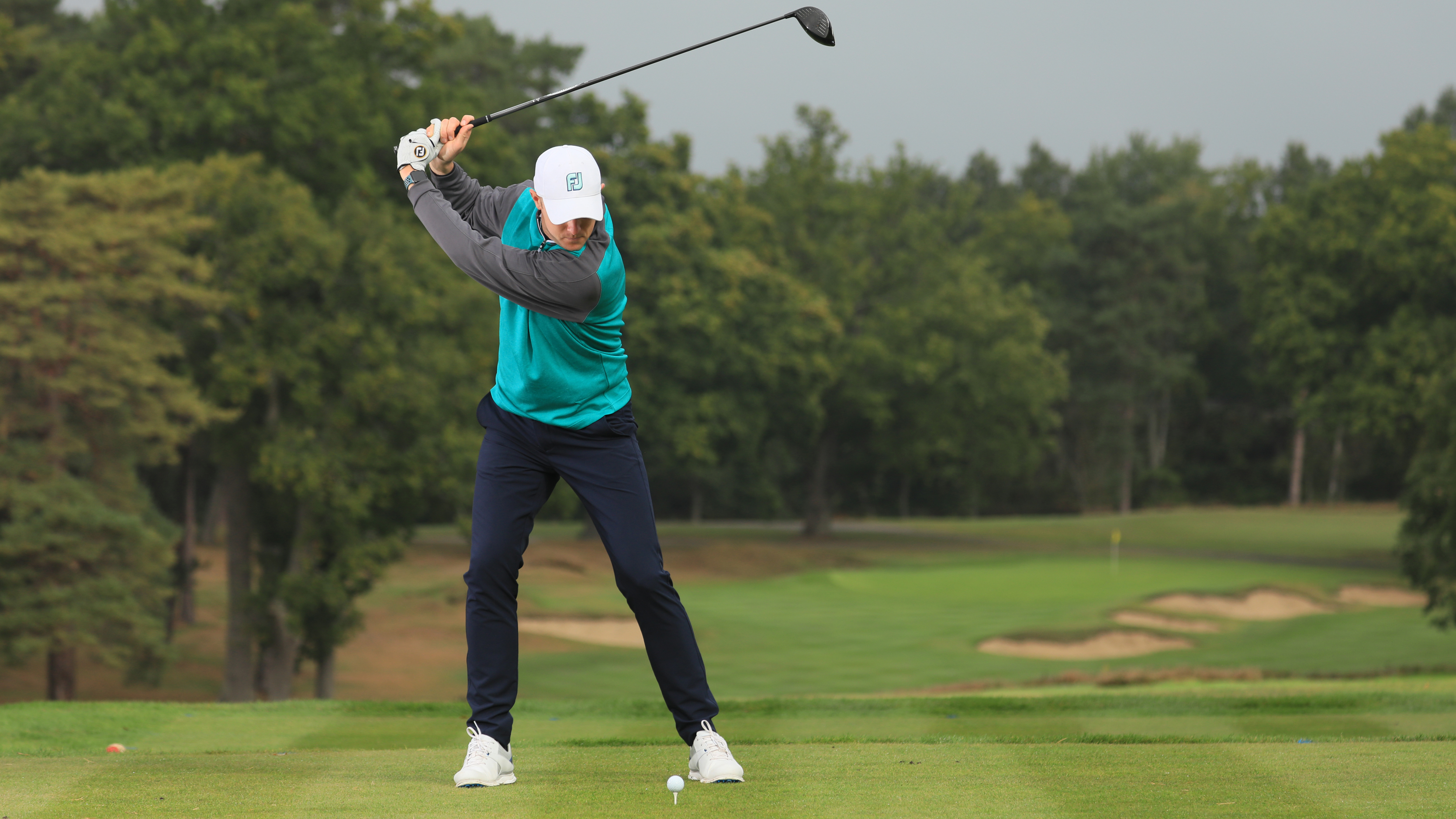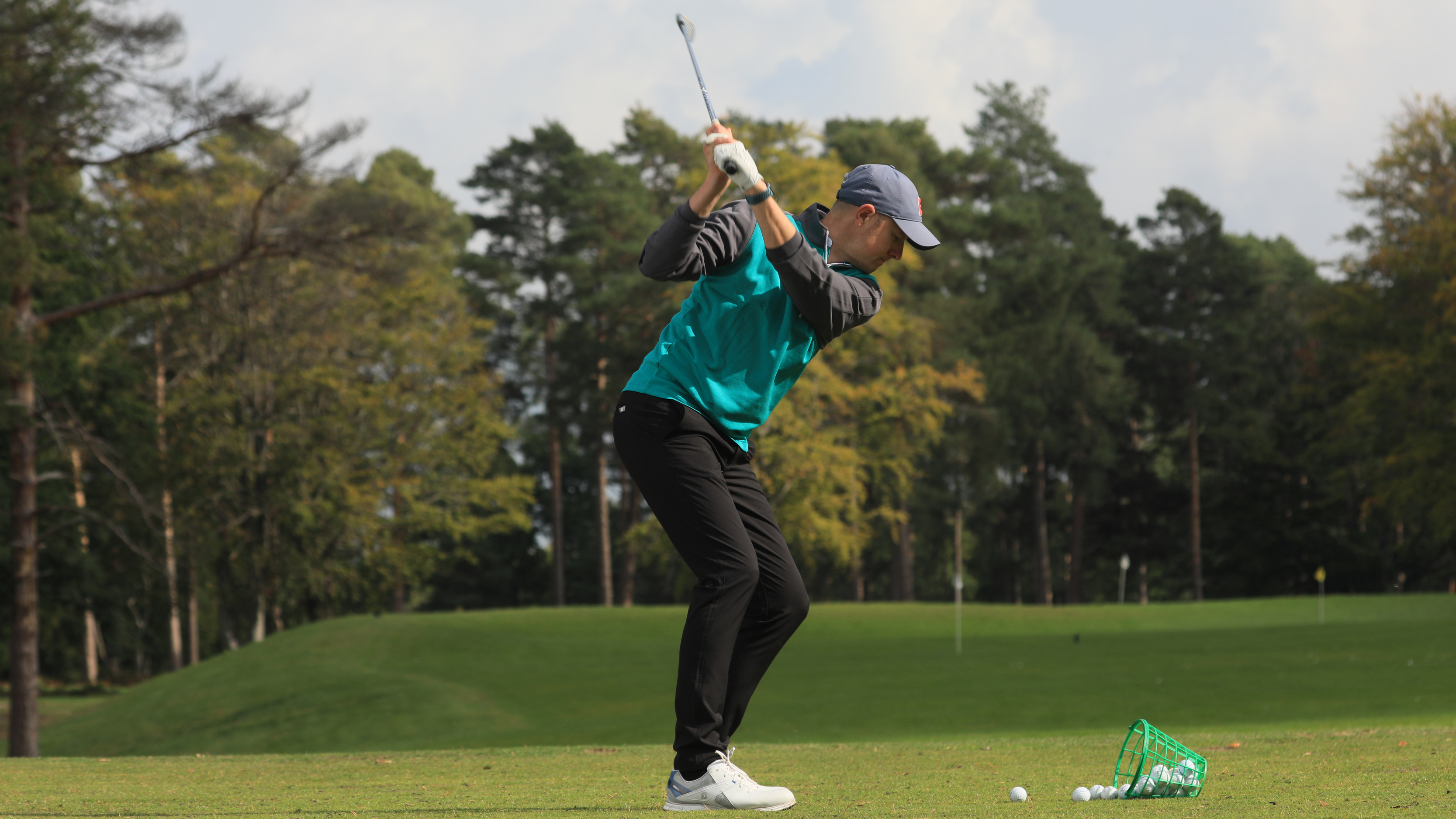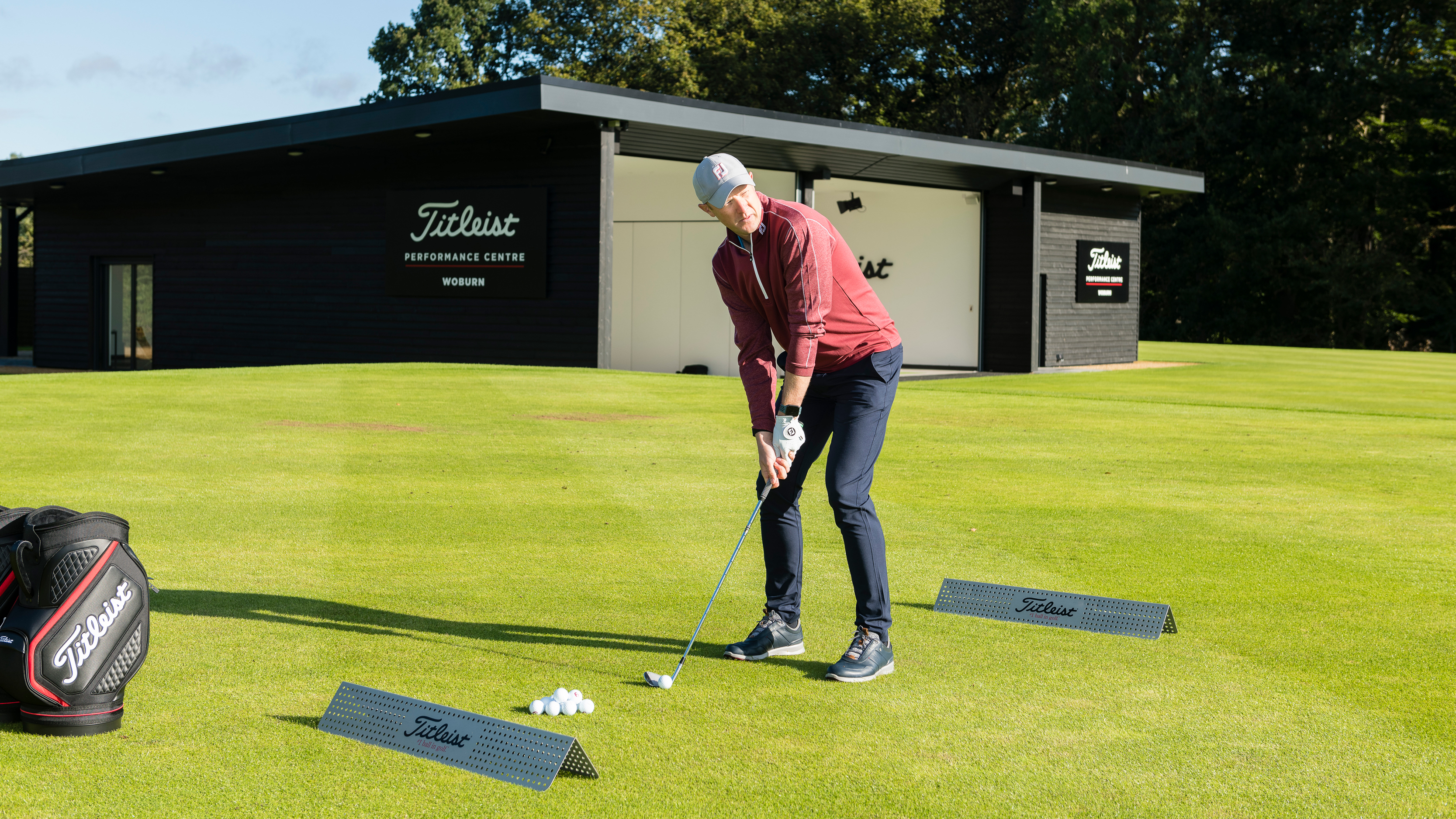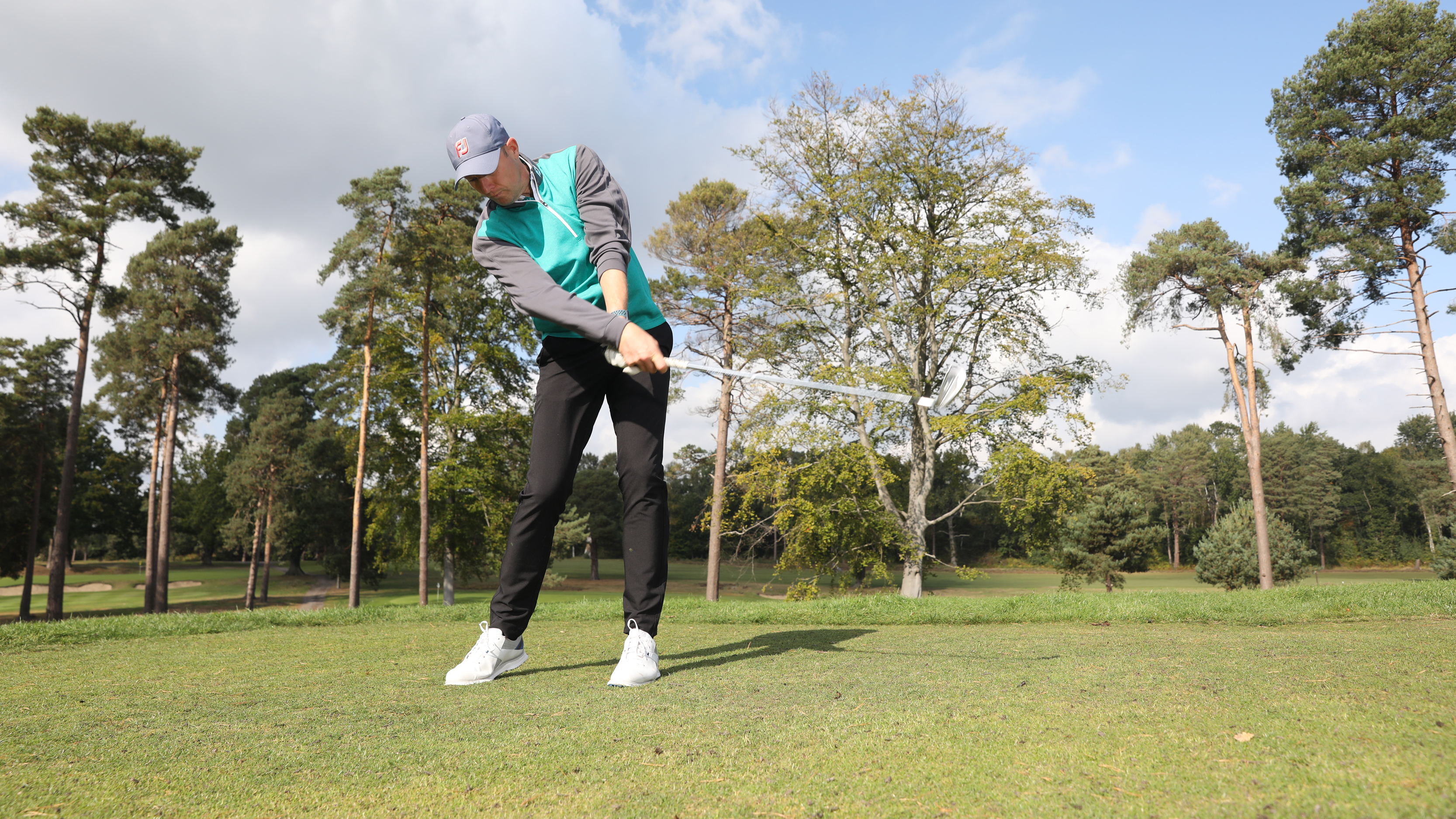7 Biggest Ball Striking Mistakes
In this video, Neil Tappin is joined by PGA pro Alex Elliott to discuss the seven biggest ball striking mistakes


There are many possible reasons you don't get better at golf, so trying to pinpoint the root cause can be tricky. That's why we've enlisted the help of PGA pro Alex Elliott, who offers some terrific insight into seven common issues that plague amateurs in the video and article below...
1. Not understanding hands ahead of ball at impact
Many think to get their hands ahead of the golf ball, they simply just push them into position, and to some extent that is true. But with that you have to understand that it changes the orientation of the clubface.
A clear way of understanding this is to use the logo of your glove towards the target as a reference. Because if you were to move your hands forward and the logo points out to the right then the clubface will be open at impact.
2. Off-centre strikes
This is a common problem, especially with the irons and driver, and one of the best ways to figure out where you are striking the golf ball in the first place is to put hairspray on the face and hit some shots.
Once you have an understanding of your tendencies and, generally, where your traditional strike is, you'll be much better placed to find a fix that will have you finding the centre more often.
3. Swaying and sliding in the swing
In terms of swaying in the backswing, you want to think of your golf swing as a massive circle all the way around you. So if your sternum is swaying off where you started, that circle is changing where you will interact with the ground. As such, many who sway struggle with fat or thin iron shots.

Swaying in the backswing is a consistency killer
A good tip to help with this is to hit shots off a slightly downhill lie. Once you pitch your stance with the hill, you'll struggle to sway back as much, which could lead to more consistency of strike.
Subscribe to the Golf Monthly newsletter to stay up to date with all the latest tour news, equipment news, reviews, head-to-heads and buyer’s guides from our team of experienced experts.
Sliding is another issue which tends to be on the downswing and the crucial thing here is to make sure you are turning more. A good exercise is to take your stance with a sofa or chair a couple of inches ahead of your lead hip.
Have your hands across your chest and as you perform a swing, once your hip slides over and makes contact with the sofa, then it's time to turn. This will encourage you to make a better downswing move.
4. Not hitting down on your irons
You want to hit down on your irons but there is a fine balance. Importantly, it is all about controlling the bottom of the arc in relation to where the ball is so that you can compress the golf ball and flush your irons consistently. Having the perfect ball position plays a big role here because the further back in your stance it is, the more you will naturally hit down on it.

Compressing your irons will improve the quality of your ball-striking
As you go from pitching wedge up to the longer irons, you want to hit down on it less, so it's really important to devote some time to this area of the game. A good exercise is to place a towel 10 inches or so behind the ball with the aim being to avoid it.
5. Not trusting the loft
This is a common problem especially for beginner golfers who think they need to almost scoop the ball up to get it in the air. The opposite is true. You need to trust that the loft on the club will do the work for you. After all, modern equipment has been specifically designed to help you flight the ball easier.
6. Not getting custom fitted
Golf can be an expensive sport, so if you are looking to invest in new bats then a golf club custom fitting is very important. For example, if you buy a set of irons off the shelf, chances are the lie angle and lofts won't be suited to your swing.

The custom fitting experience can see you make sure you get the right clubs for you
Not having the right specifications for you can significantly alter what you can do on the course and where the golf ball goes. Getting clubs tailored to your swing and your game, while expensive, will help you get the most out of your play and even save money in the long run
7. Not releasing the club properly
What is release in the golf swing? To many it means the hands releasing through impact and crossing over. Whereas now it is all about marrying up what your hands and arms are doing, alongside what your body is doing.

It's important to match up your release pattern with your grip
The mistake most people make in this regard is they are searching for a release that potentially doesn't match up with their grip, whether they have a weak, strong or neutral golf grip. A way of solving this would be, when possible, to get a lesson to figure out how to marry up the grip you use to the synchronisation of the rest of your body.

Location: Mottram Hall
Alex spent a great deal of time learning the game from fellow northwest golfer, Andrew Murray, who was a European Tour regular from 1979 to 1995. He spent three years on the European Tour caddying for Andrew’s son, Tom, before taking his PGA qualifications. His passion for the game and personality in front of the camera has helped him to create a thriving social media platform on Instagram and YouTube, where he offers a whole host of tips and advice to help viewers shoot lower scores.
Most significant influences on your teaching:
Mike Bender's book, 'Build The Swing Of A Lifetime', which I read during my PGA qualifications. He uses so many different tools to help students deliver the club better when hitting the golf ball. Andrew Murray, too. He helped form the way I interact with golfers and simplified what can be a complex game for a club golfer.
Advice for practice:
I like to get students to work in sets of five golf balls – three drills shots to two course shots. The drill shots have no consequence, but with the two course shots, I ask the student to create a green or fairway and go through a full routine.
Greatest success story:
One of my students hadn’t played golf for ten years - he'd lost his love for the game. After watching my online Instagram and YouTube content, he came for several golf lessons and has now joined a local golf club. Knowing I've helped get someone back into golf... you can't beat that.